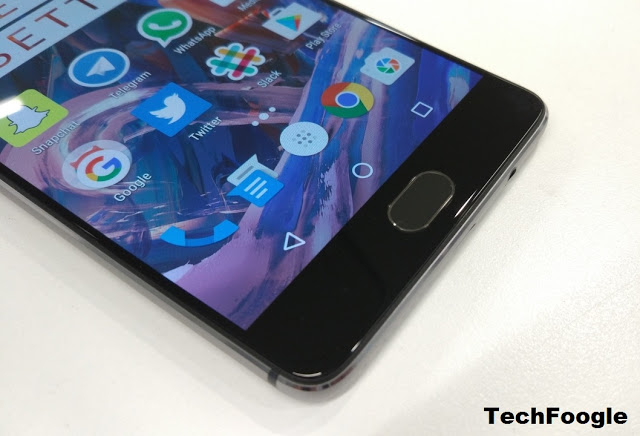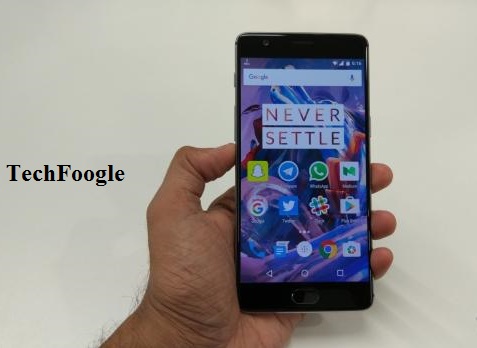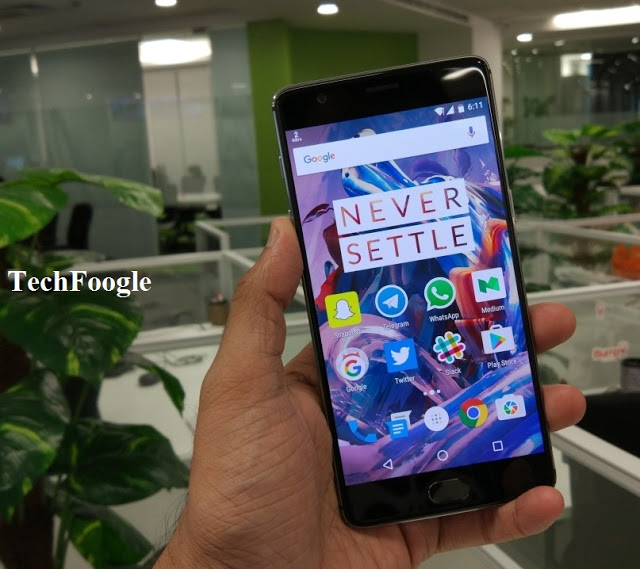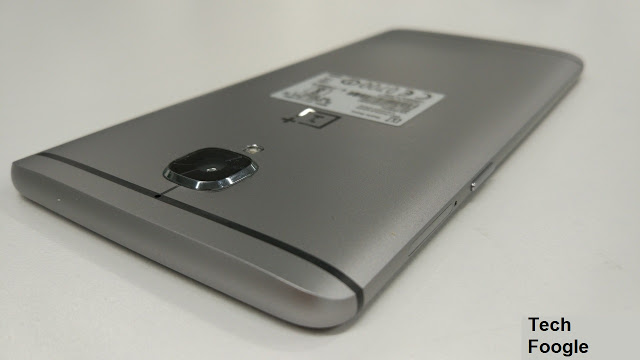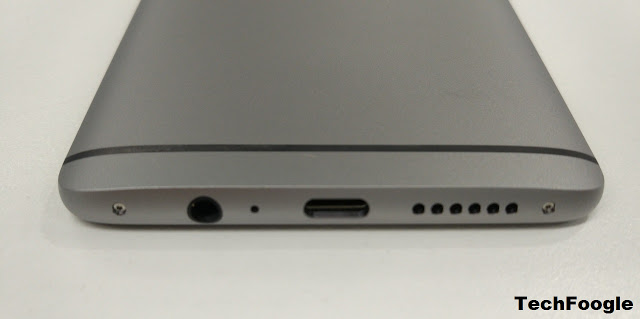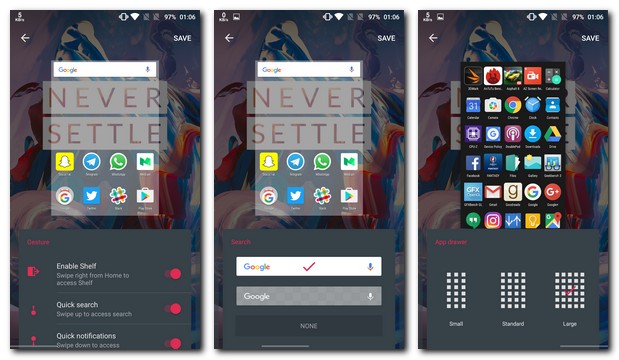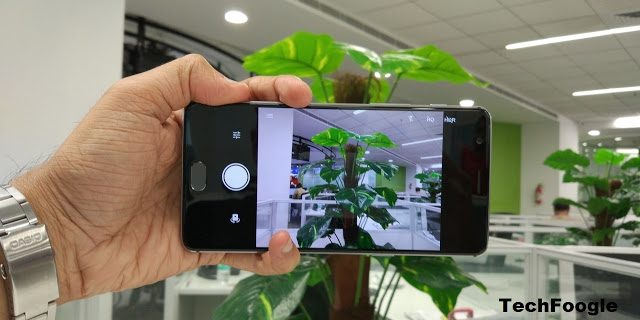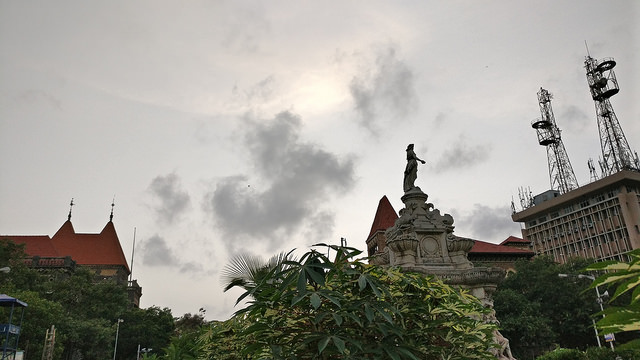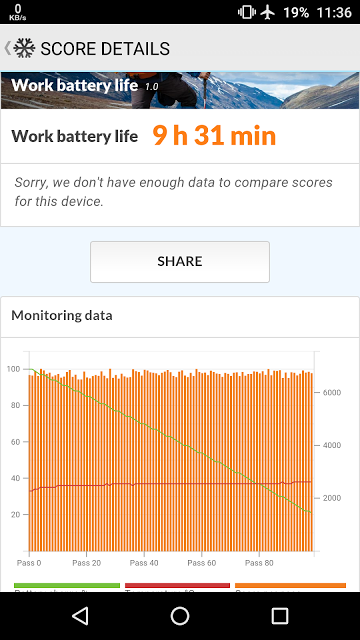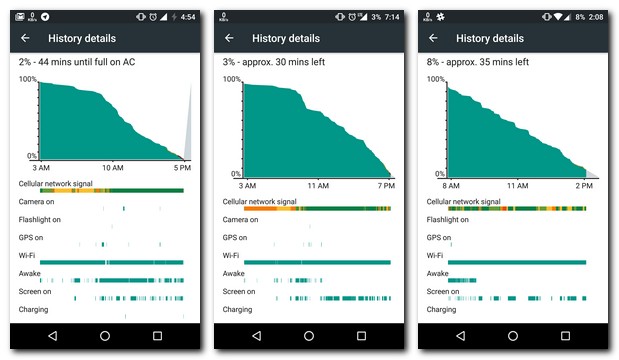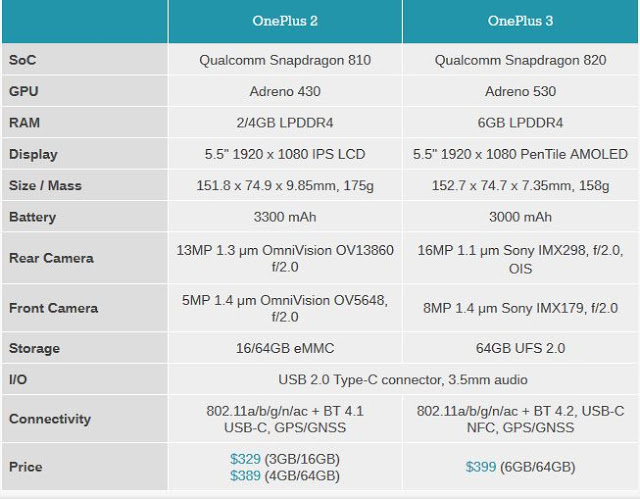OnePlus is a relatively young Chinese company, which has managed to grab everyone’s attention in a really short span of time since its inception in 2013. One of the star products was of course the OnePlus One, which offered the best of features at a very competitive price point. This was a product that had a really long product cycle, as compared to its successor, the OnePlus 2. The second flagship, OnePlus 2, was not able to match its predecessor in terms or sales or even with goodwill. OnePlus released the OnePlus X for those not comfortable with the 5.5-inch form factor. Although the OnePlus X certainly looked great, it was just old wine in a new bottle and didn’t really impress on the camera or the battery life departments.
OnePlus 3 is the company’s third flagship device and it certainly has a lot riding on it. We say that because, unlike the OnePlus One, which had little competition – except maybe from the Xiaomi Mi 3 back then – OnePlus 3 has a host of competitors. Majority of the competition is actually from its home country itself. Facing flak for screwing up with the invites-system last year, OnePlus has thankfully got rid of it with the OnePlus 3. This will certainly make buying this phone, that much more easier. But does the phone have in it, to be the best flagship device under Rs 30,000? We will find out soon.
Build and Design: 8/10
One thing that had become a sort of identifier for the last two flagship devices – OnePlus One and OnePlus 2 – was the Sandstone finish cover. This dark gray coloured cover with a soft sandpaper-type texture was certainly something new when it first came out, and it has become a hit amongst the consumers. That will change with the OnePlus 3 – with the Sandstone cover traded for a closed metallic back. The metallic cover encompasses the rear and the sides. There is chamfering on the top edge, whereas the bottom edge on the sides is comparatively sharper. The phone is slim on the sides, but has a very mild curvature on the rear side. It uses 2.5D curved glass on the display around the edges.
On the left hand side, you have the alert slider with the three settings – all notifications, priority notifications and silent – which has the familiar textured finish. Below this you have the volume rocker button. The power/standby button is on the right hand side above which is the dual nano SIM card slot. All the buttons are metallic, have great feedback and have fine chamfering around them.
The top edge is clean as the 3.5mm audio jack is the bottom edge beside the USB Type-C charging / data transfer port beside the speaker section. There is a fingerprint scanner just below the display, which looks like a button but cannot be pressed.
On the rear side, you have a grey coloured metallic back with the OnePlus logo placed just below the camera section. The antenna lines are visible on the top and the base. The camera module protrudes out significantly and there is an LED flash unit below it.
The build quality is excellent, but at the same time it also makes the OnePlus 3 look a lot like the HTC phones. The absence of the Sandstone back makes the device a bit slippery, thanks to the metallic back. Of course, you can buy the Sandstone or textured covers separately if you don’t like the metal back. One issue that immediately crops up is when you place your phone facing upwards, the protruding camera is resting on the table surface. I hope the camera surface is coated with high quality scratch resistant glass, lest you end up ruining the camera. Also you cannot really operate the phone when it is lying flat on the table as it will keep tumbling on either sides due to the prominent camera bulge.
Features: 8.5/10
The OnePlus 3 is fully kitted out as far as the specifications go. It is a flagship in every sense of the word, but to know whether it’s the flagship killer, read on. The OnePlus 3 houses the Snapdragon 820 chipset which has two Kyro cores clocked at 2.15GHz and two Kyro cores clocked at 1.6GHz. It houses the Adreno 530 GPU and the phone comes with a whopping 6GB of RAM. This makes it the first phone with 6GB RAM to be selling in India. LeEco Le Max 2, although announced earlier, will only start selling by 28 July.
In terms of storage, you get 64GB of internal storage with around 52.6GB usable space. That is quite a lot of space, unless you are someone who carries his or her entire media library on the phone. Just like its previous flagships, the OnePlus 3 does not come with expandable storage. There’s 5.5-inch full HD display, a 16MP rear camera and 8MP front-facing camera, a fingerprint scanner just below the display and a 3000mAh non-removable battery.
The phone runs on Android 6.0 Marshmallow with the OxygenOS 3.1.2 skin atop it. We shall see it in more detail in the software section. On the connectivity front, you get a dual nano SIM card slot, Wi-fi 802.11 b/g/n/ac, Bluetooth 4.2, DLNA, GPS with A-GPS, NFC and more. There is no FM radio on the phone though.
Display: 8/10
OnePlus has stuck with a 5.5-inch full HD display for the OnePlus 3, just like it had with the OnePlus 2. However, it has gone for an Optic AMOLED (a customised Samsung Super AMOLED) display instead of an IPS LCD one. It dosen’t look all that bad and thanks to the 400 ppi pixel density, the text appears sharp. Colours are natural, and unlike the Super AMOLED displays we have seen on Samsung phones, there isn’t much oversaturation of colours. In fact, you get the option to control the Colour balance of the display – thereby keeping it on the cooler or warmer end of the spectrum, based on your preference. It comes with Night more built in which cuts out the blue LEDs and gives you a warmer display to assist with reading in the darkness. You can even adjust the intensity of the Night mode as well. You can also set up ambient display which will wake the screen when you receive notifications and Proximity wake will wake up the device when you wave your hand over it to see the notifications.
The display is quite good and we faced no issues with the legibility indoors as well as outdoors. The adaptive brightness feature is not the best though, as we ended up manually setting the brightness when outdoors to improve legibility. Watching videos and going through photos on this display is a good experience, thanks to the lovely contrast provided and deep black levels. Overall, a pleasant display. We didn’t miss a 2K display, which has become a must have for flagship devices. To be honest, it matters only when you use the phone in a virtual reality headset – that’s when those 2K displays really show a difference as compared to full HD ones. With hand held use, you can barely tell the difference, unless you have the display touching your nose.
Software: 8.5/10
OnePlus had started off with using CyanogenOS on its flagship phone – the OnePlus One. But thanks to a legal case which prevented the use of CyanogenOS on phones selling in India, OnePlus finally decided to go ahead and make their own skin – OxygenOS. Unlike other smartphone OS skins we have seen in the past – MIUI 7 on Xiaomi, eUI of LeEco phones, Color OS on Oppo phones, TouchWiz UI on Samsung phones – the OxygenOS is by far the only skin that sticks very close to the original Android OS. With the OnePlus 3, we have the OxygenOS 3.1.2 which looks quite similar to Android 6.0 Marshmallow on which it is based. The only drastic new element you see on the phone is the Shelf on the left most tab, apart from Gallery, Music apps. The Music app looks quite similar to Google Play Music app, but it has added a tags option which lets you search songs quickly.
Shelf has got a feature update and it now lets you make quick notes, see your most recently used apps and contact and you can also add widgets to this screen instead of the other home screens – a much better implementation than it was on the OnePlus 2. Gestures let you draw shapes on the display of the OnePlus 3 when the phone is in the sleep mode to activate features – draw O to activate the camera, draw V to activate flashlight and so on. It also lets you wave your hand over your phone to light up the LED notifications.
Under the Personal section of settings you get the Customisation feature which lets you select the colour od LED notifications, select the dark mode or customise which icons appear on the status bar. The buttons lets you set up or swap navigational keys either as softkeys or beside the fingerprint scanner which then acts as a home button; you can further customise each of these buttons for long press and double tap actions. This is a really handy way of speeding up navigation on your OnePlus 3. Also holding onto the home page brings up the regular Wallpapers, Widgets and Customise options. Here again in the customise section, you can select the style of Google search bar, enable/disable some gestures, increase or decrease the icon size and change the grid layout for the app drawer. We did not notice any dpi scaling option which would let us have more icons on the home page instead of the traditional four icons per row. Further more you can activate the developer mode and have some more customisations on board.
Performance: 8.5/10
OnePlus 3 offers stellar performance and completely justifies the use of the Snapdragon 820 along with 6GB RAM. However, there is a catch with the 6GB of RAM. According to OnePlus co-founder Carl Pei, the RAM management in the OnePlus 3 is optimised to give a better battery performance. When seen beside the Samsung Galaxy S7, the OnePlus seems to take time to load things, as the OnePlus 3 removes things from memory to not hit the battery life. This compensating for lower battery capacity by holding only a limited apps in memory seems like a cop out. While using the OnePlus 3 on its own, you do not notice the lag to such an extent, and as far as multi-tasking goes we did not notice slow behaviour.
Throw any app at it, and the phone will run it with utmost ease. This includes heavy games as well which run smoothly. Dead Trigger 2, Asphaly 8: Airborne, Modern Combat 5 are games we played at highest settings, without noticing almost any frame drops. Call quality is excellent with loud earpiece speaker and the phone manages to hold signal quite well. So the OnePlus 3 definitely has the basics covered. The mono speaker section isn’t that great though as it does sound a bit tinny. You are better off with custom earphones.
Heating is noticed, thanks to the metal body. But there wasn’t any instant where the phone heated up to an extent where it started shutting down apps. The phone does have a tendency to get warm when in the pocket. There were a couple of instances, when the gestures got activated while I were just walking around with the phone in our pockets. A patch is definitely needed to fix this. The rear side of the OnePlus 3 reached temperatures of 38 – 40 degrees Celcius during the heavy gaming sessions.
The fingerprint sensor on the OnePlus 3 is quite fast and there were very few instances when I had to keep tapping the sensor to register a fingerprint. Wet or sweaty fingers will not be recognised as quickly though.
Camera: 8/10
The OnePlus 3 sports a 16MP rear camera with a Sony IMX298 sensor and an 8MP front-facing camera with a Sony IMX179 sensor. Both the cameras have a maximum aperture of f/2.0. The camera is complemented by a souped up camera app, as compared to last generation. You now get features such as time-lapse, slow-motion, Panorama, video and Manual. The last feature lets you adjust ISO, white balance, focus and shutter speed. The camera also supports phase-detect auto focus which ensured that the focussing was generally quick in daylight. In low light there was a bit of struggle, but not enough that it’s unbearable.
OnePlus 3 also comes with optical image stabilisation for still images and electronic image stabilisation for shooting videos, which is quite welcome. You can either draw an ‘O’ gesture on a sleeping OnePlus 3 to get to the camera mode or better still, double click on the power button to quickly open the camera. These are thoughtful additions to ensure that you do not miss out on photographs. It is also capable of shooting 4K videos.
mage quality is really good for daylight shots, which not only come packed with details, but also ensure that the colours appear natural and not unnecessarily saturated. Focussing was quick on most occasions during daytime, but was a bit of a fight post sunset. Having said that, the low light photographs manage to control noise much better than any of the previous OnePlus phones. Of course, when compared with the Samsung Galaxy S7 edge, there is still a lot of scope for improvement. Macro image focussing is not the best, and you need to be quite a distance from the object to get it in focus.
Other modes such as panorama and HDR work well. There is an auto-HDR mode which kicks in depending on the ambient light conditions. The HDR modes do have a tendency to grey out skies even when they are no clouds around. So better be careful when using it for landscape shots. Beside the HDR quick button, you have the HD button which ensures that the noise control is active. I preferred to keep the HD mode off, as we noticed loss of texture in some images due to aggressive noise control. The 8MP front-facing camera takes detailed selfies, but ensure you are not against the light, as there is no HDR mode and definitely no front-facing flash unit.
The image stabilisation is quite good, as can be seen from the 4K video sample below. It lends itself well to shooting while walking, although when you are panning you will notice some sort of rolling shutter. I found the image stabilisation for videos slightly better than the Xiaomi Mi 5, but video image stabilisation king is still the Sony Xperia Z5 which compensates shakes due to walking while shooting, quite well.
Battery: 6.5/10
OnePlus 3 comes with a 3000mAh battery. Yes, that is quite a lower capacity battery when you look at the current flagships. In fact, even OnePlus 2 had a 3300mAh battery. Battery life was definitely a concern area for us. Although the PC Mark for Android gives a respectable battery life reading, in real life we did not have such a stellar battery life performance. Most days, the battery would run out immediately after an 9-hour workday. On intense days, the phone with 100 percent charge at 8AM would be showing a completely drained out battery by 3PM. One relaxed Sunday I was surprised to see the phone run out of battery before 2PM, when we were not even using it all that heavily. So, yes the battery life has been a concern, as can be seen from the charts below. The Dash Charging technology is quite good though. I measured a charge time from 0-100 percent at 63 minutes. So if you want to quickly charge your phone, you better carry your dash charger around and hope that there is a power outlet nearby. Dash Charging is also supported by car chargers. Although speedy charging is great, we would still have liked it if the battery life was a tad bit better.
One argument, OnePlus may make is that the battery capacity was limited to 3000mAh to ensure that the phone is slim – it is slim at 7.4mm thickness. But that doesn’t really help much as the camera module protrudes out quite a bit. I am very skeptical of placing the phone facing upwards, as it then rests on the camera module and makes operating the phone while on the desk wierd. With a cover snapped on, the protrusion of the camera is compensated for. I am sure a lot consumers would prefer a long lasting phone to just a slim phone. Hopefully with future software updates I will see improvements on the battery life front. One can just hope. I did notice a bump in battery life only when I switch to the Dark mode and turned off all animations. You shouldn’t be doing that on a flagship phone in the first place, so that was a bit of a downer.
Verdict and Price in India
So is the OnePlus 3 really the flagship killer that was promised? Not really, no. Samsung Galaxy S7/edge still hold that crown in pretty much most departments. But is this OnePlus’s best phone yet? Without a doubt.
At Rs 27,999, the OnePlus 3 makes for a good buying decision, specially now with that annoying invite-only system lifted buying it will become much more convenient. OnePlus 3 offers a good overall design and the internal specifications ensure that you get the best performance that is expected of a flagship. Yes, the RAM management to ensure better battery life will not be liked much by the power users, however for regular users that shouldn’t really be that much of a concern. Never did the phone randomly shut down any app. Heat management is quite good, with the temperatures barely touching 38 degrees on the most intensive games. If you are outdoors in summer heat, it will heat up though. Camera upgrade is certainly well worth it.
The only flaw we found with the phone was its battery. At 3000mAh battery capacity, this will surely not last you a day if you are a heavy user. Regular usage will give you around 10-12 hours of use. I like the fact that the Dash Charging really speeds things up when the phone is out of juice, but you need to have a power outlet nearby, and the Dash Charging adapter with you always. There wasn’t a single day in our 10 day test that we did not charge the phone in the middle of the day, after having a 100 percent charge in the morning.
Should you buy the phone? Only if you can overlook the average battery life. Because in every other department, the OnePlus 3 shows really good performance. Yes, it is Rs 3,000 more than the other Snapdragon 820 sporting phone in this range – the Xiaomi Mi 5. But the edge it has over the Mi 5 is the fact that you get most functions of the Android 6.0 Marshmallow and even the camera department of the OnePlus 3 edges past that of the Xiaomi Mi 5. But the Mi 5 definitely offers a better battery life. We still have to test the LeEco Le Max 2 which also comes with a Snapdragon 820 + 6GB RAM combination. As compared to the flagships from LG, Samsung, Sony and HTC, the OnePlus certainly offers a better value proposition for those looking at a relatively more affordable flagship device.
OnePlus certainly has a lot riding on the OnePlus 3, considering that it is not considering launching the next version of OnePlus X this year and instead focussing on its flagship models. OnePlus has done away with one annoyance – the invite system. But it still needs to be sending regular software updates to take care of the little niggles. Existing OnePlus 2 users need not upgrade. OnePlus One and OnePlus X users can certainly consider the OnePlus 3 – but be aware of the battery life limitation.

